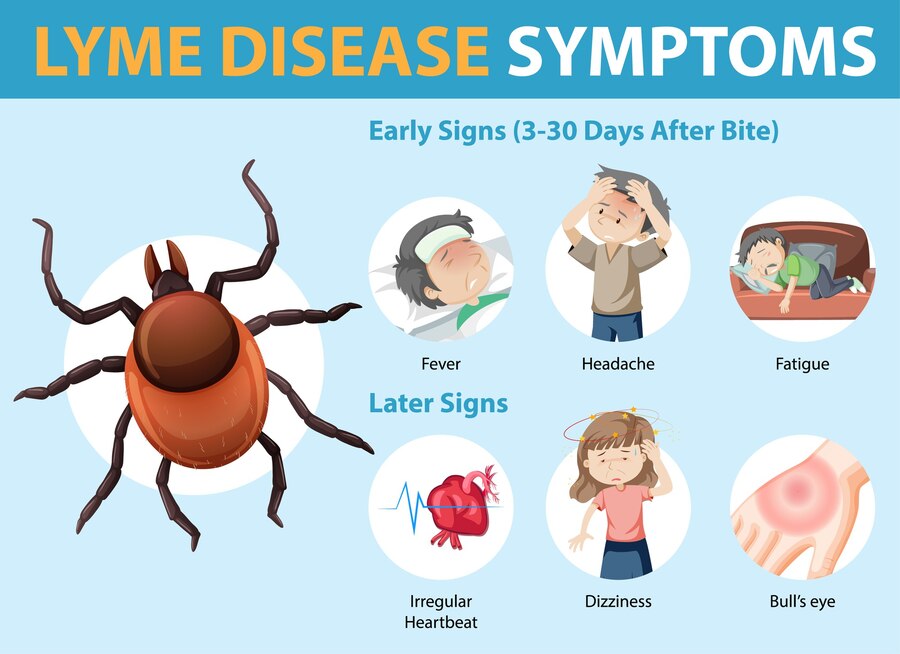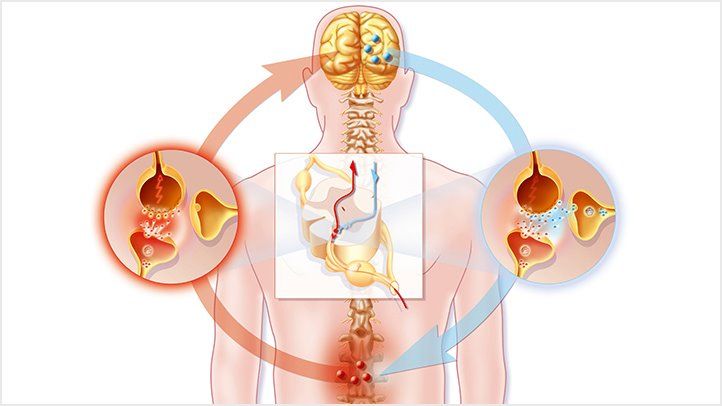Lyme disease is a tick-borne illness caused primarily by the bacterium Borrelia burgdorferi, although other Borrelia species can also contribute to the disease in some regions. The disease is transmitted to humans through the bite of infected black-legged ticks, also known as deer ticks.
Symptoms of Lyme Disease
The symptoms of Lyme disease can vary significantly from person to person and typically progress through several stages. Here’s a breakdown of the common symptoms associated with each stage:
-
Early Localized Stage (3 to 30 days post-tick bite):
- Erythema migrans (EM) rash: This is often the first sign of Lyme disease and occurs in approximately 70-80% of infected individuals. It typically appears as a red, expanding rash that can sometimes clear in the center, giving a “bull’s-eye” appearance.
- Flu-like symptoms: Fever, chills, headache, fatigue, muscle and joint aches, and swollen lymph nodes can accompany the rash.
-
Early Disseminated Stage (days to weeks post-tick bite):
- Additional rashes: More EM lesions may appear on other parts of the body.
- Neurological symptoms: These may include facial palsy (loss of muscle tone or droop on one or both sides of the face), severe headaches, neck stiffness due to meningitis, and pain or weakness in the limbs.
- Cardiac symptoms: Heart palpitations or an irregular heartbeat, known as Lyme carditis, can occur.
- Migratory pain: Pain in muscles, joints, tendons, and bones.
-
Late Disseminated Stage (months to years post-tick bite):
- Arthritis: Severe joint pain and swelling, particularly in the knees and other large joints.
- Neurological issues: This can include numbness or tingling in the hands or feet and short-term memory problems.
Some individuals may experience more severe symptoms such as headaches, seizures, tingling, muscle twitching, and impaired cognition. Lyme disease Protocol can be complicated as it often involves multiple co-infections with other pathogens like Babesia, Bartonella, and Ehrlichia, which can exacerbate symptoms.
Causes of Lyme Disease
The primary cause of Lyme disease is the bite of an infected black-legged tick. However, the risk of contracting the disease depends on several factors:
- Geographical location: Lyme disease is most prevalent in the northeastern, north-central, and Pacific coastal regions of the United States, but it is also found in Europe and Asia.
- Tick habitat: Ticks thrive in wooded and grassy areas, making outdoor activities in these environments a risk factor.
- Tick life cycle: The disease is primarily spread by nymph-stage ticks, which are tiny and difficult to detect.
Risk Factors
Certain factors increase the likelihood of contracting Lyme disease, including:
- Spending time in wooded or grassy areas: This increases exposure to ticks.
- Not using tick repellents: Lack of proper protective measures can lead to tick bites.
- Having pets that carry ticks into the home: Pets can transport ticks from outside environments to humans.
Prevention
Preventing Lyme disease involves reducing exposure to ticks. Recommendations include using insect repellent, wearing protective clothing, checking for ticks after outdoor activities, and promptly removing any ticks found on the skin.
In summary, Lyme disease is a complex condition with a wide range of symptoms and potential complications. Early detection and treatment are crucial to preventing long-term health issues. Biomagnetic therapy is one of the alternative treatments explored for managing Lyme disease relief, offering relief through non-invasive techniques.




